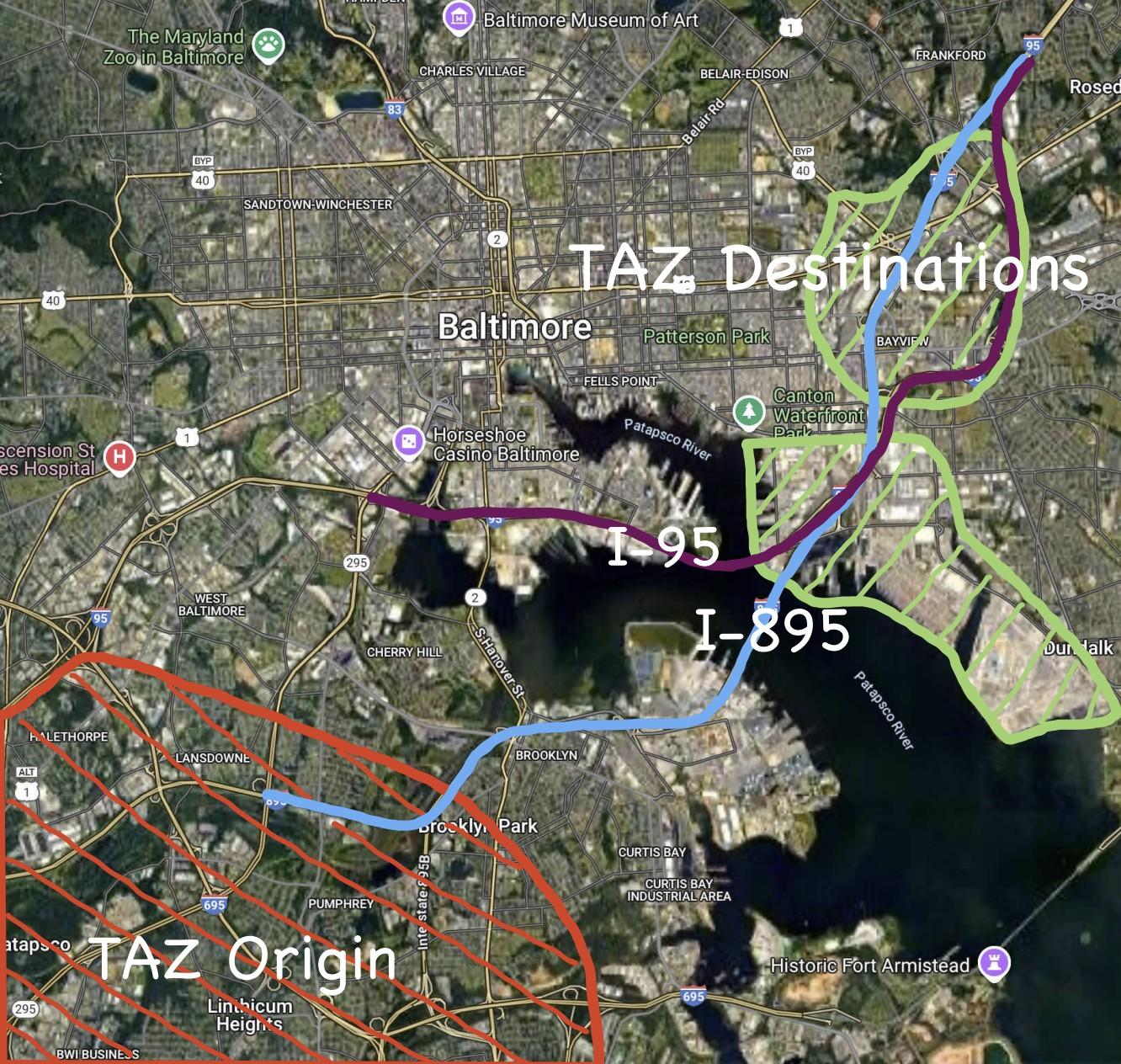Project Description:
On March 26, 2024, the Francis Scott Key Bridge collapsed after a container ship collision, forcing over 34,000 daily commuters to reroute through already burdened corridors such as I-95 and I-895. This sudden shift has intensified traffic congestion and raised concerns about the long-term mobility of workers, especially those who rely on efficient access to their jobs across the region. Our team is focused on addressing these impacts by exploring practical traffic solutions, such as shifting peak travel hours, implementing stoplights at key entrances, and introducing High Occupancy Vehicle (HOV) lanes. Through CORSIM traffic simulations and data analysis, we evaluated how these strategies could help ease congestion and support more reliable commutes throughout the affected network. Our goal is to propose the best solution that will help reduce traffic flow and improve traffic safety while considering metrics such as cost, greenhouse gas emissions, travel time, public opinion, safety, and feasibility.
